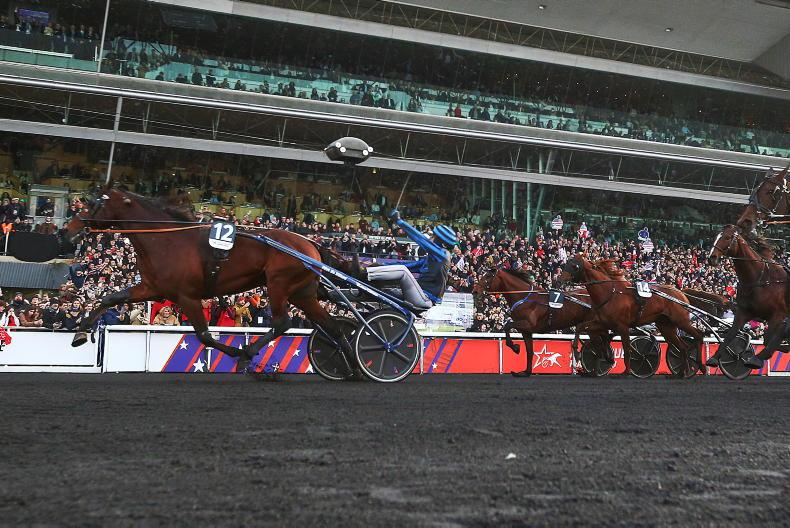THE National Hunt season peaks at Cheltenham in March. The best flat horses in Europe are kept in work for the Prix de l’Arc de Triomphe at Longchamp in October.
The European trotting circuit holds its ‘Championnat du Monde’ on the unwieldly date of the last weekend in January.
The Prix d’Amerique fixture midway through the famous ‘winter meeting’ at Vincennes in Paris means cold and dirty work for the young people who groom the top trotters.
However, it falls well for a nice long weekend for Irish and British harness horsemen as these islands do not race through the winter and the big occasion is a nice break from schooling two-year-olds.
Around 24 of the usual drivers and trainers who participate at Irish tracks will be in the crowd at ‘The Temple of Trot’. In Ireland, the sport lives in the shadow of racing and show jumping.
Big stage
Therefore, it is a refreshing change to see trotting on the big stage with a €1 million pot and 40,000 enthusiasts in attendance. French gambling company ZE Turf is the principal sponsor.
The race was instigated in 1920 and is regarded as one of the great harness races of the world alongside The Hambletonian in America and The Elitlopp of Sweden. The French trotting authorities named the race in honour of the American troops who came to their aid in World War I. The only time the race was not staged was due to World War II.
The stars and stripes is much in evidence in the spectacular opening ceremony for what is considered by some to be the most prestigious harness race in the world.
THE 2023 renewal has been thrown wide open as the ante-post favourite Calgary Games (Swedish owned but trained in France) has been withdrawn due to a throat infection.
He had not officially qualified for the Amerique although the French pundits had him down as certain to make the line-up. Horses. Who would have horses?
The qualification process is like so many aspects of French culture and sport, difficult to explain. Six possible qualifying races (we would say ‘heats’) are run although some are at different distances and some use the ‘autostart’ while others use the ‘volte’ start.
The volte start is not unlike a flag start at a point-to-point. The runners mill around walking in a large circle until the word ‘go’ is given. Contrary to US (or even Irish) style racing the outside berths might even be the best as a wide sweep on the outside of the circle can allow the horse to get into stride more easily.
Chaotic
For such a formal occasion, and a massive cheque for the winner, the starts can be strangely chaotic. When the Italian horse Varenne won in 2001 there were seven false starts.
As well as around 12 qualifiers over roughly 10 weeks of qualifying races it seems that another six horses with group race form or high money earnings can be invited to race also.
At the time of going to press the final 18 runners had not been confirmed. The runners named in the brief preview below are taken from the latest sources in Paris. The 18 runners have also the option of taking part in the Prix de France on February 12th and the Prix de Paris on the 26th. In recent decades some Swedish trainers started a craze for removing a pair, or all four shoes, from certain horses, which is supposed to give the horse an edge. The craze has become the norm.
On the level and well-padded tracks on the continent, this can be done, usually on race day only.
Nowadays many column inches are given over to whether the market principals will race ‘ferré’ or ‘deferré’ and this must be declared on the programme like ‘first time blinkers’, for example, under rules.
Le TROT web site usually broadcasts live coverage, or with slight delays. Sky Sports Racing have been known to carry pictures as part of its Sunday racing coverage.
We suggest that you keep an eye on the comperes’ build up if you wish to see the race.


 This is a subscriber-only article
This is a subscriber-only article
 It looks like you're browsing in private mode
It looks like you're browsing in private mode









SHARING OPTIONS: